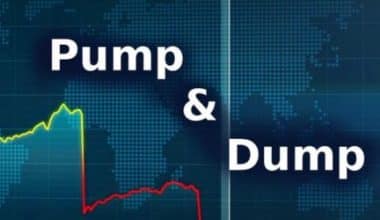One thing that is in mind of every businessman or worker is a retirement plan. There are different retirement plans however this guide will showing tax-sheltered annuity. Plus the 403 sheltered annuity, the withdrawal, plan, and what is all about.
What is Tax Shelterd Annuity?
A tax-sheltered annuity (TSA) is a retirement savings plan in which workers of tax-exempt organizations. And self-employed individuals can invest pretax cash to accumulate retirement income. Moreover, tax sheltered annuities are intended to generate constant payouts over time and to serve as a steady source of income in retirement.
More detailed Explanation of TSA
Basically, annuities can be in a number of different ways. They can offer income for a set amount of time (for example, 25 years), guarantee payments for the annuitant’s whole life. And be structure to provide income to a surviving spouse if the annuitant dies. let’s look at the 403 tax sheltered annuity
The 403(b) plan is one type of tax-sheltered annuity in the United States. Moreover, this plan offers employees of some nonprofit and public education institutions, a tax-advantaged way to save for retirement. However, there is normally a cap on how much each employee can contribute to the plan. But there are often catch-up provisions that enable employees to make more contributions. So as to make up for earlier years when they did not maximize contributions.
403 Tax Sheltered Annuity
A 403(b) plan tax-sheltered annuity is a retirement plan offered by government schools and certain charitable organizations. However, it is fairly similar to a for-profit entity’s 401(k) plan. A 403(b) plan, like a 401(k), allows employees to defer a portion of their salary into individual accounts. Broadly, until the future date salary is in distribution, it is not subject to federal or state income tax. A 403(b) tax sheltered annuity plan, on the other hand, may provide designated Roth accounts. Salary paid into a Roth account is currently pay tax, but it is tax-free (including earnings) when dispersed. Those that are eligible for a 403 tax shelter annuity are public high school, a college, or a university and a church.
What’s more?
There are normally annual limits on how much you can contribute to a 403(b) plan. Moreover, your employer may offer you several alternatives for having payments collected from your paycheck. You may also have an option of mutual funds, like stock or bond funds, upon which to invest the money you contribute. Examine your strategy to ensure that your money is investing in the way you choose.
Pros and cons involve 403 tax sheltered annuity plan
- Firstly, Contributions are flexible
- Secondly, The employer’s investment options are the only ones available.
- Lastly, may incur significant administrative costs
Employees eligibility in a 403(b) tax sheltered annuity plan.
- Workers in the following categories are eligible to participate in a 403(b) plan:
- Employees of tax-exempt organizations incorporated under Section 501(c) of the Internal Revenue Code (3).
- Employees of public school systems who work in a school’s day-to-day operations.
- Workers of hospital service groups that work cooperatively.
- Faculty and staff of the Uniformed Services University of the Health Sciences who are civilians (USUHS).
- Employees of Indian tribal governments who work in public school systems.
- Certain ministers, if any:
- Ministers employed by organizations classified as 501(c)(3).
- Ministers who are self-employed. A self-employed minister is treated as being employed by a qualified employer, which is a tax-exempt organization
Note: Ministers who meet both of the standards listed below.
- Ministers (Chaplains) work for organizations that are not exempt under Section 501(c)(3)
- In their day-to-day professional responsibilities with their employers, they act as ministers.
Tax Sheltered Annuity Withdrawal
Any money taken out of the tax-sheltered annuity before the age of 59 1/2 is considered an early withdrawal. Furthermore, the IRS penalizes early withdrawal of tax-sheltered annuity by 10%, in addition to adding the amount distributed to your annual gross income. However, you may withdraw any funds that have “vested” in the account.
Meanwhile, vested money is money that you own, whether through salary reductions or contributions from your employer. However, not all employer contributions are instantly vested; there could be a five-year waiting period before becoming fully vested. So, all you need for early tax-sheltered annuity withdrawal is a distribution form from your tax-sheltered annuity plan administrator for early withdrawal.
Exceptions for Early Tax sheltered Annuity Withdrawal
There are few exceptions that allow you to take early withdrawal without incurring a 10% penalty. Firstly, you can spend $10,000 to finance your first home, whether you buy, build, or remodel. Another exemption is using the money for college tuition. Both of these exceptions apply to you, your spouse, your child, or your grandchild. Moreover, you can also take tax-free withdrawals to cover medical expenses that exceed 7.5 percent of your annual income. Finally, You can also use your TSA to keep your home from foreclosing or evicted.
Tax Sheltered Annuity (TSA) Vs 401(k) Plans
TSA Key points
First key point: Employees can invest money before taxes in a retirement plan using a tax-sheltered annuity.
Second key point: Employees of public schools and tax-exempt organizations are eligible for TSA plans.
Third key point: Withdrawals are taxable by the IRS, but donations to the tax-sheltered annuity are not.
Fourth key point: Employees benefit from greater tax-free funds accruing since employers can contribute to TSA programs.
Last key point: Charities, religious groups, and other nonprofits may be eligible to offer tax-sheltered annuities to their employees.
Is a TSA Equivalent to a 401(K)?
Public schools and a few nonprofits have retirement plans known as 403(b) plans, sometimes known as tax-sheltered annuity plans or TSAs. It resembles a 401(k) plan managed by a for-profit organization. A 403(b) plan enables employees to contribute a portion of their pay to personal accounts, just like a 401(k) plan does.
What Is an Account That Is Tax-sheltered?
An item or a portfolio of assets that is bought or set up to legally lower your income tax obligations is known as a tax-sheltered investment. Vehicles designed by the Internal Revenue Service (IRS) to promote retirement saving are the most popular tax-sheltered assets.
Are Tax-sheltered and Tax-deferred the Same Thing?
A tax shelter that is not permanent is a tax-deferred retirement account. Your taxable income is decreased by the amount of your contribution to a 401(k) or deductible traditional IRA, depending on which one you choose.
Can I Take Money Out of My TSA?
The TSA plan is a method for long-term retirement savings. Your ability to access your money is restricted by IRS rules. Only after leaving your position with the UW System, turning 59 12 years old, or becoming incapacitated are you able to withdraw your contributions.
How Do Tax-sheltered Annuities Function?
An investment vehicle known as a tax-sheltered annuity enables an employee to make pretax contributions to a retirement account using income. The Internal Revenue Service (IRS) does not tax the contributions and associated benefits since they are pretax until the employee withdraws them from the plan.
What Exactly Is a Tax-sheltered Account?
An item or a portfolio of assets that is bought or set up to legally lower your income tax obligations is known as a tax-sheltered investment. Vehicles designed by the Internal Revenue Service (IRS) to promote retirement saving are the most popular tax-sheltered assets.
Are Tax-sheltered and Tax-deferred the Same Thing?
A long-term investment account called a tax-deferred annuity, also called a tax-sheltered annuity, is made to offer monthly income distributions after retirement, much like a pension. The insurance industry offers this kind of annuity.
How Do Tax-sheltered Annuities Function?
An investment vehicle known as a tax-sheltered annuity enables an employee to make pretax contributions to a retirement account using income. The Internal Revenue Service (IRS) does not tax the contributions and associated benefits since they are pretax until the employee withdraws them from the plan.
Can You Take Money Out of an Annuity That Is Tax-sheltered?
The TSA plan is a method for long-term retirement savings. Your ability to access your money is restricted by IRS rules. Only after leaving your position with the UW System, turning 59 12 years old, or becoming incapacitated are you able to withdraw your contributions.
What Benefits Does a Tax Shelter Offer?
Tax shelters are crucial, despite the fact that occasionally people see them negatively. By using such financial instruments, people can assist themselves keep a larger portion of their earnings or recoup part of their expenses. They offer a legitimate alternative to the government taxing a portion of your money.
Conclusion
From the above study, you can see that a tax-sheltered annuity is a type of investment plan that allows employees to make pretax contributions to a retirement account from their earnings.
TSA FAQ’s
What is the difference between a tax-sheltered annuity and an IRA?
Both IRAs and annuities offer a tax-advantaged way to save for retirement. An IRA is an account that holds retirement investments, while an annuity is an insurance product. … The tax treatment of your annuity payments depends on whether you bought the annuity with pre-or after-tax funds.
Can you take money out of a tax-sheltered annuity?
You can take distributions from the 403(b) plan at age 59½ if you are fully disabled or at a separation of service. 10% IRS penalty may apply if withdrawn before age 59½. Regular income tax will be due on distributions.
What are the disadvantages of an annuity?
- Annuities Can Be Complex.
- Your Upside May Be Limited.
- You Could Pay More in Taxes.
- Expenses Can Add Up.
- Guarantees Have a Caveat.
- Inflation Can Erode Your Annuity’s Value
How can I get money from my annuity without penalty?
The most clear-cut way to withdraw money from an annuity without penalty is to wait until the surrender period expires. If your contract includes a free withdrawal provision, take only what’s allowed each year, usually 10 percent
What is the best age to buy an annuity?
Investing in an income annuity should be considered as part of an overall strategy that includes growth assets that can help offset inflation throughout your lifetime. Most financial advisors will tell you that the best age for starting an income annuity is between 70 and 75, which allows for the maximum payout.
What are the tax implications of cashing out an annuity?
You do not owe income taxes on your annuity until you withdraw money or begin receiving payments. Upon a withdrawal, the money will be taxed as income if you purchased the annuity with pre-tax funds. If you purchased the annuity with post-tax funds, you would only pay tax on the earnings.
Why do financial advisors push annuities?
annuities are costly because they are insurance-based products that have to make up the cost of what they are guaranteeing you. … For younger investors, the annuity is pushed as a tax deferral investment program. A variable annuity will give you that at a cost.
How can I get out of an annuity contract?
If you decide that you no longer want the annuity within the set time frame, then you can simply cancel the contract without incurring a surrender charge from the insurance company.
Who qualifies for a 403b plan?
Employees of tax-exempt organizations are eligible to participate in the plan. Participants include teachers, school administrators, professors, government employees, nurses, doctors, and librarians.
How much should you have in your 403 B when you retire?
By most estimates, you’ll need between 60% and 100% of your final working year’s income to maintain your lifestyle after retiring
Who owns a 403 B tax-sheltered annuity?
A 403(b) plan, also known as a tax-sheltered annuity plan, is a retirement plan for certain employees of public schools, employees of certain Code Section 501(c)(3) tax-exempt organizations, and certain ministers
Is 403b better than Ira?
The advantage of a 403(b) when compared to your IRA options is that it has a higher contribution limit. The most that can be contributed to a 403(b) account through employee elective deferrals by means of a salary reduction agreement for 2011 is $16,500. Another advantage of the 403(b) can be your investment choices.
How much should you have in your 403 B when you retire?
By most estimates, you’ll need between 60% and 100% of your final working year’s income to maintain your lifestyle after retiring.
- 403(b): what is 403(b)? (A Definitive Guide And All You Should Know
- Ordinary Annuity: Formula & How to Calculate
- 403(b) vs 401(k): Which Is The Better Plan? (+ Pros And Cons)
- Present Value Formula: Definitions, Examples, Formula & Calculations
- 401 (k) WITHDRAWALS: Rules and 4 ways to avoid penalties






